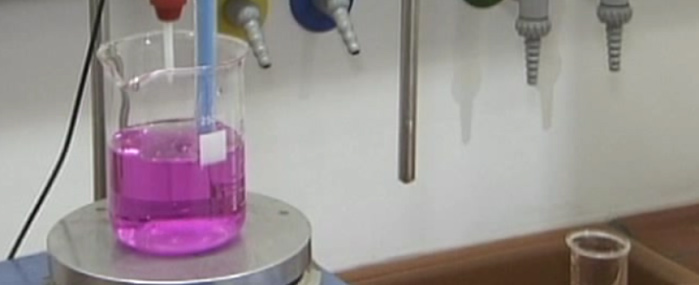
Direct Links:
Fractional Distillation
A fractional distillation is used to separate a mixture of liquid compounds based on the differences in their respective boiling points. For improvement of the separation efficiency the round bottom flask containing the initial mixture is equipped with a column, normally a Vigreux rectifying column. A condenser, normally a Liebig condenser, is connected to the column. Here the gaseous compounds condense. The Liebig condenser has two further openings, one with a ground glass joint to take in a thermometer and one with a hose coupling for the application of reduced pressure. A spinner which is connected to the condensor enables the user to choose between several flasks. By heating of the round bottom flask with an oil bath, the compounds begin boiling successively and thus rise through the rectifying column and condense in the Liebig condenser to end up in one of the spinner's flasks. For each compound some forerun has to be taken into account which is collected in an extra flask until the temperature of the distillation reaches a constant value. The course of temperature shows the separation of the different pure compounds.